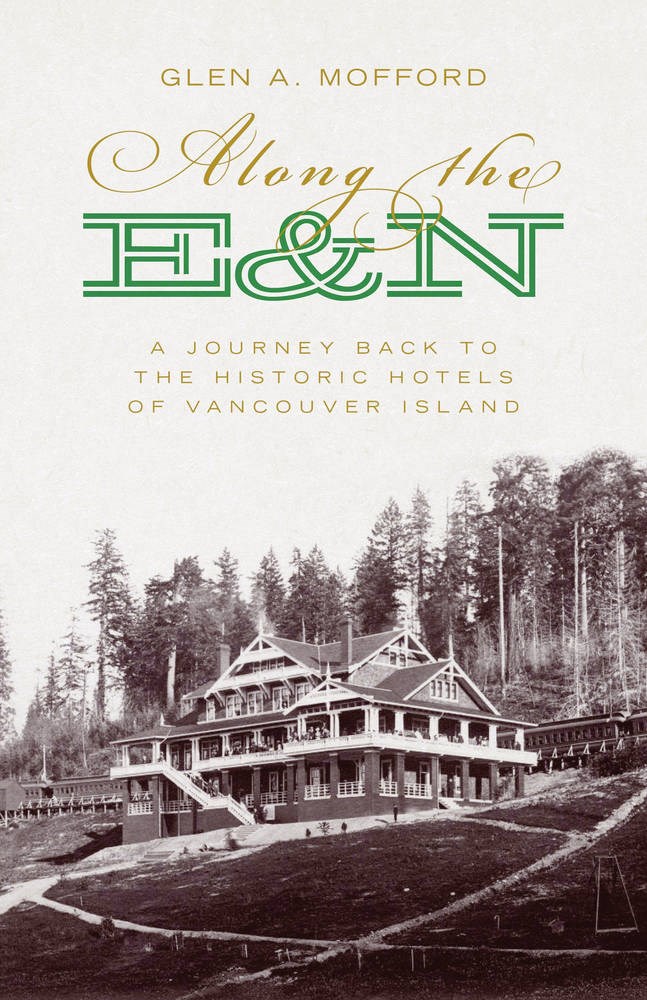When the Covid pandemic is behind us, I am going to treat myself to a little vacation, as most of us probably plan to.
One of the highlights of any vacation for me is the hotel stay, not at a glittering Marriot or Sheraton which look identical the world over with their beige “marble” lobbies, glittering ceilings and cheap decor of giant vases of perfumed silk flowers beside brown vinyl lobby couches. I prefer an aging hotel with a slightly pungent fragrance of old carpet and wood where the uneven floors creak, the sinks are porcelain and water stained, the windows open and there’s a real key to the door (however, at this point, even a Motel 6 looks pretty good). Many of these types of quaint hotels were constructed along railway lines; the grand ones of course were right across sa���ʴ�ý, one in every province.
When Mum died, I spread her ashes on a beach in Saint Andrews, New Brunswick (amongst a blustery seaside snowfall — in June!) and I stayed at the grand old Algonquin, only to find that Marriot had purchased it and replaced the lovely lace curtains with beige valour drapes, sealed the windows, and adorned the lobby in black and silver knick-knacks.
The Fort Garry in Winnipeg is still grand, with its wide hallways and high ceilings, albeit with powder blue paint and gold leaf peeling from the bar walls, and the velvet arms of the wing back chairs warn smooth, but it’s fabulous — the bar is still polished with wax and the brass gleams.
Closer to home, you can read about our old railway hotels in the delightful book Along the E&N, A Journey Back to the Historic Hotels of Vancouver Island by Glen A. Mofford (2019, Touchwood Editions), E&N meaning Esquimalt and Nanaimo Railway, one of several railway lines that served Vancouver Island in days gone by.
Now, the line sits more or less abandoned and overgrown by a tangle of blackberry, scrubby broom, and wild daisies, the rusting tracks and ties sinking back into the earth (although several sections have been made into walking paths). The author describes 32 historic hotels along the railway route (some more elegant than others, some more noted for the drinking) although most have been either demolished or burnt to the ground, numerous photographs provide a delightful record of these old lodgings. Only nine survive today, including The Parson’s Bridge Hotel, also known as The Six Mile House on the West Shore. It was established in 1855 and is thought to be the oldest pub in the province.
Were you fortunate enough to take the train up-island before it was halted? People with aesthetic appreciation truly miss the unhurried railway journey and tried valiantly to save it — even our Senator Pat Carney attempted to keep this lovely old train on the tracks but to no avail.
I was fortunate enough to make the journey up to Comox from Victoria. It took a good part of the day as the three or four heavy lumbering yellow carriages with the murky smudgy windows rolled over the numerous trestles, through the lush, shadowy forests and along the seaside, stopping leisurely at the little red painted wooden stations, each with a place name painted in black swinging above the concrete platform. I took lunch, a thermos of my favourite beverage and a Jane Austen novel; by Union Bay, I was weeping and swooning over Mr. Darcy.
The Bowser Hotel, which was in operation from 1929 to 1969, is one of the most endearing but saddest stories in the book. The author describes the cheerful, unique lodging as being home to a variety of trained animals (including a deer and a raccoon). Mike the dog served beer to the amused and thirsty customers — “Mike even collected payment in his teeth and deposited it in the correct slot in the cash register. He then ran back with any change owing as well as a bottle opener.” The ending is heartbreaking.
Some of my fondest memories throughout my life are at hotels (don’t get the wrong idea!).
The “Pink Palace”, reminiscent of old Hollywood, with framed and faded photos in brown wooden frames of tuxedoed Cary Grant hang on the damp grey-pink stucco walls, and the smell of charcoal barbecues waft through the warm night air. Mum and I were put up at the Ritz in Montreal during one her art openings — the room was small and dim with a slight mildew odour in the chipped and gritty tiled bathroom, but they still served little elegant chocolates on a silver tray at bedtime.
When I drove across sa���ʴ�ý from New Brunswick, my final stop was for breakfast in the cowboy town of Merritt at the Coldwater Inn. The hotel was built in 1908 and is known for its huge copper dome which gleams above the murals of famous country and western singers painted on the town’s shops. I ate a huge plateful of pancakes and felt like Annie Oakley among the wranglers fuelling up before a day on the ranch as I was keening to get home after a trek of 5,000 miles.



